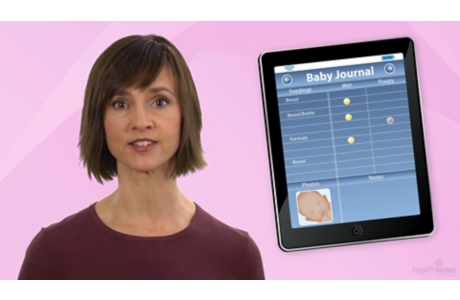Breastfeeding at Work
Topic Overview
You can continue to breastfeed after you return to work. But it is important to think ahead about practical issues, such as where to store your pumped milk.
Some issues to consider include:
- Employer support. Before your child is born, talk to your employer about your breastfeeding plans. Point out the benefits of continuing to breastfeed, such as greater personal satisfaction and possibly fewer sick days off because of your breastfed baby’s reduced risk of some illnesses.
- Timing. If possible, wait at least 4 to 6 weeks after the birth of your baby before returning to work. This helps ensure that your milk production is established. Try to time your first day back toward the end of the workweek rather than the beginning. This helps you adjust to working again.
- Logistics. Work out the details of where you can pump or breastfeed, and how you will store your breast milk. Also, plan for how frequently you will need to breastfeed or pump and how long it will take. You may be able to pump your breasts during your normally scheduled breaks or over your lunch period. To minimize the number of breaks you need to take at work, breastfeed just before and after work.
- How to prepare your baby. If you are certain that you will be returning to work, show your baby how to drink from a bottle, or even a cup if your baby is older.
- Before going back to work but after breastfeeding has been well established (usually after a month), have someone other than yourself offer your baby a bottle of breast milk. Try this at least an hour before the next feeding is due and at a time of the day that your baby is usually happy.
- Don’t force the baby to drink from the bottle. If he or she refuses, wait a couple of days and try again. When your baby drinks from a bottle easily, continue to offer one every so often. About 7 to 10 days before returning to work, give the baby feedings from a bottle more regularly. You will go and pump while someone else does the feeding.
- How to prepare yourself. Be aware that the first week back to work typically is the most difficult and exhausting. Plan on pumping several times a day. A typical schedule would be mid-morning, lunchtime, and mid-afternoon. Stop pumping when you have a reasonable amount of milk or after about 20 minutes, whichever comes first.
- How to make sure you maintain your milk supply. If your supply is a little low, pump more often—even if only a little milk is coming out. This will tell your body that you need more milk. In a few days, your milk supply will catch up to the demand.
Current as of: May 29, 2019
Author: Healthwise Staff
Medical Review:Sarah Marshall MD – Family Medicine & Adam Husney MD – Family Medicine & Kathleen Romito MD – Family Medicine & Kirtly Jones MD – Obstetrics and Gynecology
This information does not replace the advice of a doctor. Healthwise, Incorporated, disclaims any warranty or liability for your use of this information. Your use of this information means that you agree to the Terms of Use. Learn how we develop our content.






